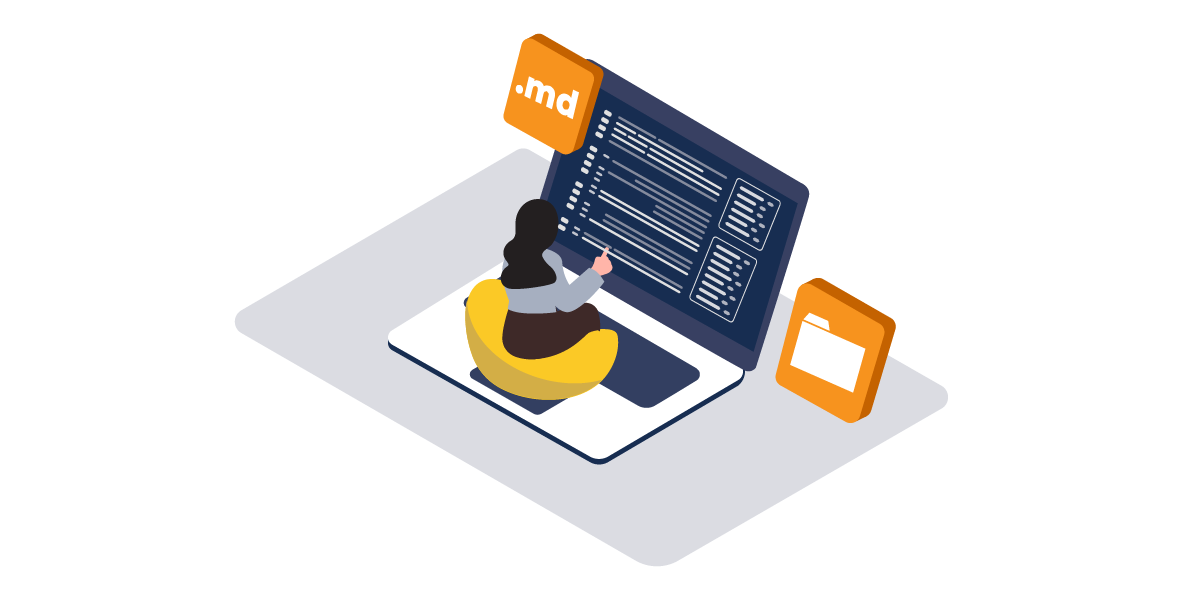Content management systems are necessary for building any company’s online presence. Types of content management systems vary depending on the needs of the business and often smaller systems are more effective for building websites faster, such as an API-first micro CMS.
A micro CMS is any lightweight CMS allowing you to get started with minimal hassle or time investment. In a traditional CMS, you are expected to set everything up by yourself. However, a micro CMS is more of a managed solution, which has everything set up already including hosting. You connect to it via APIs, extending your content workflow in a much smoother way.
There are 3 varying definitions of micro CMS' all with distinctive pros and cons.

Blogging is one of the ways you can increase your business online. You can use online platforms like Medium and dev.to to write and publish blogs with little effort and greater efficiency, targeting a wider and relevant audience. Let's discuss the advantages and disadvantages of this micro CMS below.
Advantages:
- Ease of operation and minimum initial overheads: With platforms like Medium, you don’t need to invest much time or money into blogging. Within a few minutes you can create an account. Use the text editor to start building your content, add a category, and then publish it with the hit of a button.
- Wider target audience and freedom to focus on building content: When you use a blogging platform, you can reach your target audience very quickly. All you need to do is assign the appropriate tags to your blog article and the relevant audience can view it. You can use your time well to create effective blog content.
Disadvantages:
- No ownership: When you use platforms to blog, you don’t have ownership rights. If the platform was to be turned off, you could stand to lose all your content. You could lose your target audience and cannot extract written data from the platforms.
- Low creative control over content presentation: You are limited with expressing your creative control on your blog content. All you can do is alter the title and add some images to your blog articles.
- Inability to publish free content: Serving free content can drive relevant traffic to your blog. However, when you blog via an online platform, you may not be able to do this as much of the promoted content has to forge through a paywall.
Discover why using these platforms may not be the best for you.
2. Minimal file structures (Flat-file CMS)
In traditional CMSs, content is stored in a database. However, flat-file CMSs stores your data as markdown files and folders. With no querying of databases, pages are seen to load quickly. This in turn can help influence higher SEO rankings and create an optimum user experience.

Advantages:
- Ownership of data and simple user interface: This type of micro CMS has a simple user interface that can be easily set up and used to edit proprietary content.
- High level of security: With flat-file CMS, there is no database to hack into and hence, no central location from where data can be stolen. With proprietary data and no external platform, your website and its content are better protected from cyber-crime.
- Low cost: The majority of flat-file CMSs are free to use and have free plugins to download.
Disadvantages:
- No customization: Flat-file CMS does not allow a high level of website customization unlike WordPress which can have several plugins for various areas of application. With the former, you are limited by the flat-file format.
- Not very user-friendly: With flat-file CMSs being at the development stage, more focus is on improving performance, stability, and functionality. People with slightly advanced technical knowledge, including knowing how to create and edit JSON and other files, will find it easy to navigate the flat file system.
3. Headless CMS (API-driven CMS)
If you’d rather build your own company blog instead of using an online blogging platform, then using headless micro CMS is the way to go. It’s a flexible and user-friendly solution that allows you to integrate your blog and corporate website within minutes.

Advantages:
- You reap the rewards: When you blog on an online platform, though you gain several benefits, it's ultimately the platform owner who gets the reward. However, you reap the benefits when you set up your own blog because you own it.
- You control the design and data: With complete control over your website design, you can design your blog to best represent your brand image in all its uniqueness.
- More flexibility: While writers do not need high-end technical expertise to get started, developers have the flexibility to choose which programming language they want to work with. They are not committed to a specific CMS framework.
- Higher loading speed and enhanced security: With a lighter load and smaller code, your web pages will load quickly which is great for your SEO. It is also largely secure with fewer chances of being hacked into as your blog cannot be accessed from a database.
Disadvantages:
- Higher initial setup time and need for developer assistance: A developer spends a lot of time at the initial stage to build the front-end layer while using the API to plug in the back-end. However, once the configuration is done, you need virtually no assistance from your developer.
- Live preview features for your blog content: If you want to see how your content will appear when updated, you will need to choose a headless CMS with a live preview feature.
What's the best micro CMS for your team?
For non-technical individuals, an online publishing platform makes sense as you won't have to deal with the initial coding stages to get started with your blog. The publishing platform also handles content hosting and other features such as commenting, so you don't have to configure them.
For small, technical writing teams that don’t need a fancy UI for non-technical users, a flat-file CMS would make sense to start with as it requires minimal set-up to get started with. The data also belongs to the team and allows for the blog to be scoped to the team's domain. With a smaller team size, it may also be relatively easy to train technically savvy writers in the structure of the flat-file being used as a CMS.
For larger teams (10+ people, including a developer), where speed matters alongside scale, micro CMSs make the most sense. Although API-driven CMSs require some setup time, this investment pays out the most in the long run. Writers won't require technical knowledge to get started with writing, and after integrating the API properly with the website, developers won’t ever need to get involved with updating content.
Hosted micro CMS solutions like ButterCMS handle all the complexities of scaling for development teams, so they only have to focus on the product and the writing team can focus on the writing.